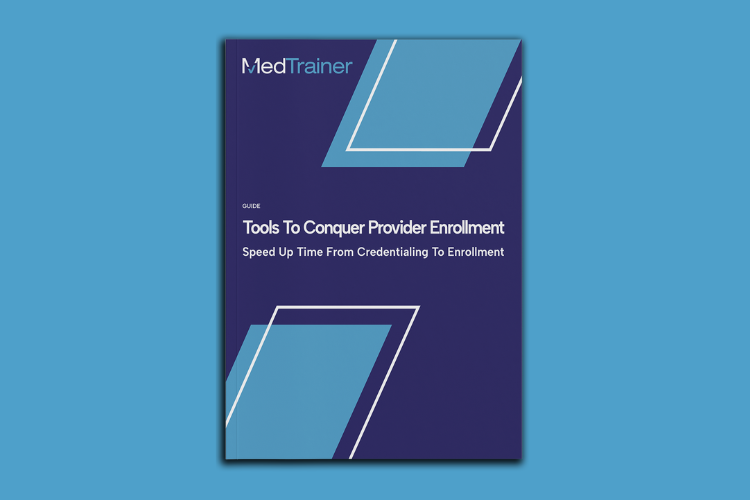As a healthcare organization, you understand the importance of working with insurance payers to ensure smooth and timely reimbursement. The challenge is meeting each payer’s unique provider credentialing and enrollment process requirements.
This blog will highlight how credentialers can navigate Aetna provider enrollment. We’ll walk you through the steps to enroll providers with Aetna (a CVS Health company), the information and documents you’ll need, and best practices to follow.
Why Is Payer Enrollment Important For Healthcare Organizations?
Payer enrollment is a crucial step that allows healthcare providers to participate in the network of a specific insurance payer. By enrolling with individual payers, your organization gains access to a wide range of patients with insurance coverage. In addition, being in-network with specific payers means your facility can provide healthcare services to its members at negotiated rates, leading to more stable revenue streams and better financial stability.
Benefits of Enrolling Your Providers With Aetna
Here are some key advantages of your organization enrolling providers with Aetna:
- Broad revenue opportunities: Aetna is the 6th-largest health insurer in the U.S. and offers your providers access to ~22 million medical insurance members.
- Negotiated reimbursement rates: When your providers are in-network with Aetna, they can provide services to Aetna members at negotiated reimbursement rates. These rates are typically higher than what they would receive for out-of-network services, ensuring that your organization is fairly compensated for its expertise and services.
- Patient trust and confidence: Being in-network with a reputable insurance payer like Aetna can instill trust and confidence in the patients seen by your providers. Aetna members are more likely to choose providers within their network, and by being part of that network, your organization can attract and retain your organization can attract and retain more patients – and providers – and the revenue that comes with them.
- Collaboration and referrals: Enrolling with Aetna opens up opportunities for collaboration and referrals with other Aetna network organizations. This can lead to mutually beneficial relationships and help grow your organization’s professional network.
By completing Aetna provider enrollment, you can tap into these benefits and position your organization and providers for long-term success.
Understanding The Payer Enrollment Process
Before enrolling healthcare providers with Aetna, it’s essential to have a clear understanding of the payer enrollment process. Here are the key steps:
- Gather Training and Education
- Gather Licensing and Certification
- Gather Work History Details
- Gather Payer-Specific Requirements
- Following Application Submission

Get the tools you need to eliminate delays in your provider enrollment process.
Aetna Provider Enrollment Guidelines
Aetna requires that all providers meet standard credentialing criteria to become a healthcare professional in its network. Recredentialing is required every three years in most states. The recredentialing process requires meeting the same criteria as during the initial credentialing process. Aetna uses the Council for Affordable Quality Healthcare (CAQH credentialing) ProView application for credentialing.
Here is a list of the information you’ll need to gather to credential a provider with Aetna:
- Licensure and/or certification verified through state licensing boards in geographical areas where network practitioners will care for members
- Board certifications (when applicable)
- Loss of/limitation of hospital admitting privileges (when applicable)
- Current professional liability coverage
- Drug Enforcement Agency (DEA) and state controlled-drug substance registration, when applicable, through verification by the U.S. Department of Commerce National Technical Information Service (when applicable)
- Disciplinary history or adverse actions related to licensure and DEA registration, which we query through state licensing boards and the National Practitioner Databank (NPDB)
- Malpractice insurance claim history to examine any possible trends and to look for evidence that might suggest any probable substandard professional performance
- Mental and physical health to determine if the practitioner’s history might suggest any probable substandard professional performance in the future
- Details on participation in government programs such as Medicare or Medicaid
- Professional education and training through verification by the American Medical Association (AMA) Masterfile, American Osteopathic Association (AOA), and specialty board or specific residency/training program (highest level of education, depending on practitioner type)
- Work history
Once Aetna receives the signed contract, it will request that the credentialing process get started. The process typically takes 60 to 90 days. For most states, Aetna uses CAQH to obtain credentialing applications. Once approved in the credentialing process, Aetna will countersign and return the final contract. Aetna systems will reflect your provider’s participation effective date, and Aetna members can see the provider’s information in the directory. The provider can now submit claims.
Enroll Successfully The FIRST Time
MedTrainer Credentialing Software keeps all the necessary information for Aetna provider enrollment in one user-friendly place with proven workflows, customizable dashboards, one-click reporting, and automated reminders to keep tasks on track.
Our powerful software offers:
- Enrollment Applications Dashboard: Quickly assess and improve your enrollment process with dynamic graphs that show application age, average time to complete applications, and number of closed applications per credentialer.
- Built-in Automation: Keep the enrollment process moving forward with automated reminders for providers to send documents, notification of recredentialing deadlines, and license expiration.
- Highly Customizable Reports: With all credentialing data in one place, it is easy to customize reports for monthly payer submissions so that you can stay on top of due dates and status. Save reports for easy access, and schedule them to be emailed to internal and external recipients.
- CAQH Profile Management: Streamline your enrollment processes with the most up-to-date provider information at your fingertips. Save time and improve provider onboarding and recredentialing with CAQH profile management.
- Application Workflow Management: Simplify enrollment processing with a customized workflow, status, process checklist, notes, and task assignments. Easily assign multiple enrollments to staff, update statuses, and prioritize.
Download our guide – Tools to Conquer Provider Enrollment – for valuable tips on speeding up the time from credentialing to enrollment approval. Schedule your demo to see MedTrainer Credentialing Software in action.
